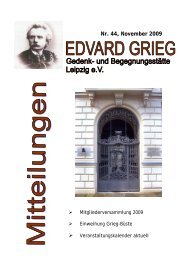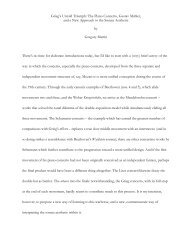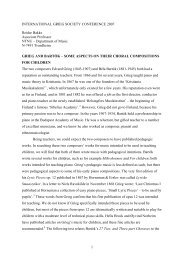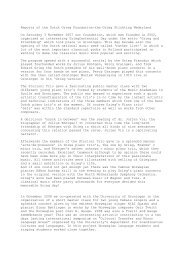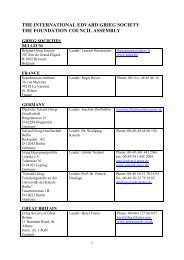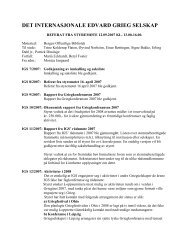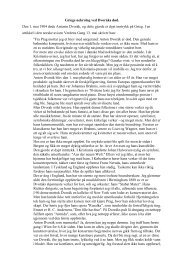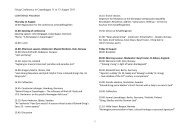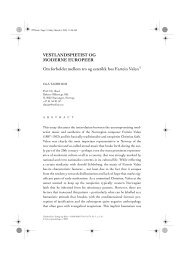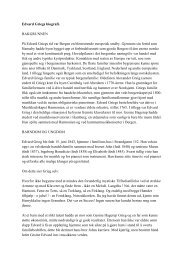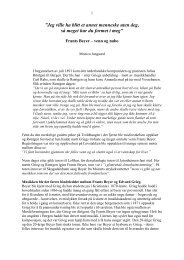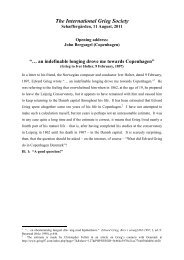Gregory Martin - paper 2007 - Grieg Society
Gregory Martin - paper 2007 - Grieg Society
Gregory Martin - paper 2007 - Grieg Society
You also want an ePaper? Increase the reach of your titles
YUMPU automatically turns print PDFs into web optimized ePapers that Google loves.
Following two scherzando variations and the second funeral march is the critical<br />
variation 9, the fulcrum of the composition. Here, <strong>Grieg</strong> begins to more overtly shift his<br />
interpretation of the chromatic element from the linear dimension (as he established in<br />
the theme) to the vertical one, through the construction of harmonies replete with tertianextensions.<br />
Once the chromatic element has been decidedly moved from the horizontal<br />
dimension into the vertical realm, <strong>Grieg</strong> begins his process of moving more exclusively<br />
within true harmony (i.e. not contrapuntally produced sonorities) and then attenuating or<br />
purifying it until all that remains is a triad. This variation is also significant in that its<br />
temporal suspensions, wherein an A-flat 9 th chord is treated with a cadenza-like arresting<br />
of motion, portend the removal of measured time which <strong>Grieg</strong> will achieve by the end of<br />
the last variation (Ex. 7). 42<br />
42 In their excellent book Edvard <strong>Grieg</strong>, The Man and the Artist, Finn Benestad and Dag Schjelderup-Ebbe<br />
claim that one aspect of this variation that sets it apart from those before it is its 9+17+17 phrase<br />
construction. While a literal reading does yield such a find, it seems to me more accurate to describe the<br />
additional bars (1+5+5) as ‘temporal suspensions.’ It could thus be represented: [8(+1)] + [4+8(+5)] +<br />
[4+8(+5)].<br />
20



